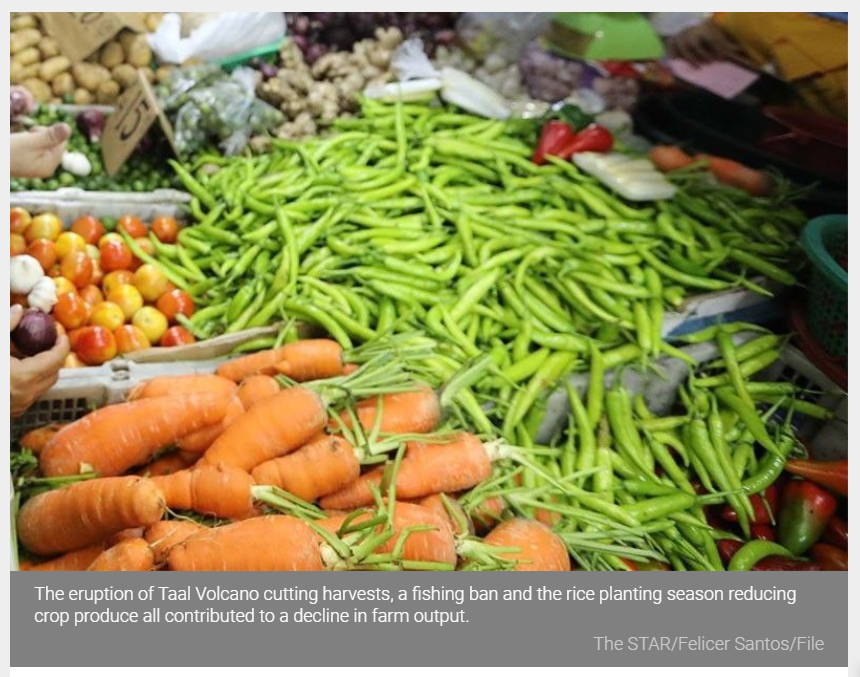Philippines: Sans pandemic impact, agriculture still dives in first quarter
MANILA, Philippines — The Philippines’ long-struggling agriculture sector suffered a fresh setback in the first three months, pulled down by less harvests and an underperforming fisheries sector and dashing hopes of some economic growth at the start of the year.
The value of farm output declined 1.2% year-on-year from January to March, down further from 0.1% contraction in the previous three months, the Philippine Statistics Authority (PSA) reported on Wednesday. It was the sector’s worst performance since the second quarter of 2019, and also marked a reversal of 0.4% growth same period last year.
Broken down by sector, fisheries dealt the heavy blow to agriculture, dropping 5.2% year-on-year. The crops segment also contributed to the decline with a 2.1% decrease in harvests during the period.
On the flip side, the livestock subsector, fresh from the damage caused swine fever, inched up 0.6% annually, while the value of poultry industry rose 3.9% year-on-year.

In a statement after the report was released, Agriculture Secretary William Dar said the fall in farm output was “expected,” partly because of crop damage incurred from the eruption of Taal Volcano in Batangas last January. “But we are hopeful of a rebound for the second quarter despite the impact of coronavirus disease-2019 (COVID-19) crisis, as strategic interventions…are expected to bear fruit,” Dar said.
One of the reasons why Dar expected the contraction was because the planting season for rice just started, and therefore palay harvests were down 3.6% annually as of March. Corn supplies, an alternative staple to rice, also slid 3.4%.
The weakness in the fisheries sector was also brought about by the closed fishing season implemented late last year and lasted for three months ending March.
That said, and with the lifting of the closed fishing season, Dar said agriculture should recover in the second quarter even amid the COVID-19 pandemic and movement restrictions enforced to curb the virus’ spread. For one, Dar highlighted the disbursement of P8.5 billion for the rice resiliency project during the pandemic which aimed to incentivize farmers to diversify into better rice types and plant more.
“Right after the current dry season, we will see to it that farmers will plant more areas by providing them quality seeds, fertilizers and appropriate technologies,” Dar said.
But Alvin Ang, economist at Ateneo de Manila University, was more pessimistic when sought for comment. He said logistical bottlenecks encountered by farmers in marketing their harvests during the health crisis and lockdowns means some produce were not sold, and losses likely spiked.
“There are so many small farmers subcontracting for big ones. With this situation, many of them likely suffered,” he said in an online exchange.
Source: https://www.philstar.com/business/2020/05/06/2012219/sans-pandemic-impact-agriculture-still-dives-first-quarter


 English
English




